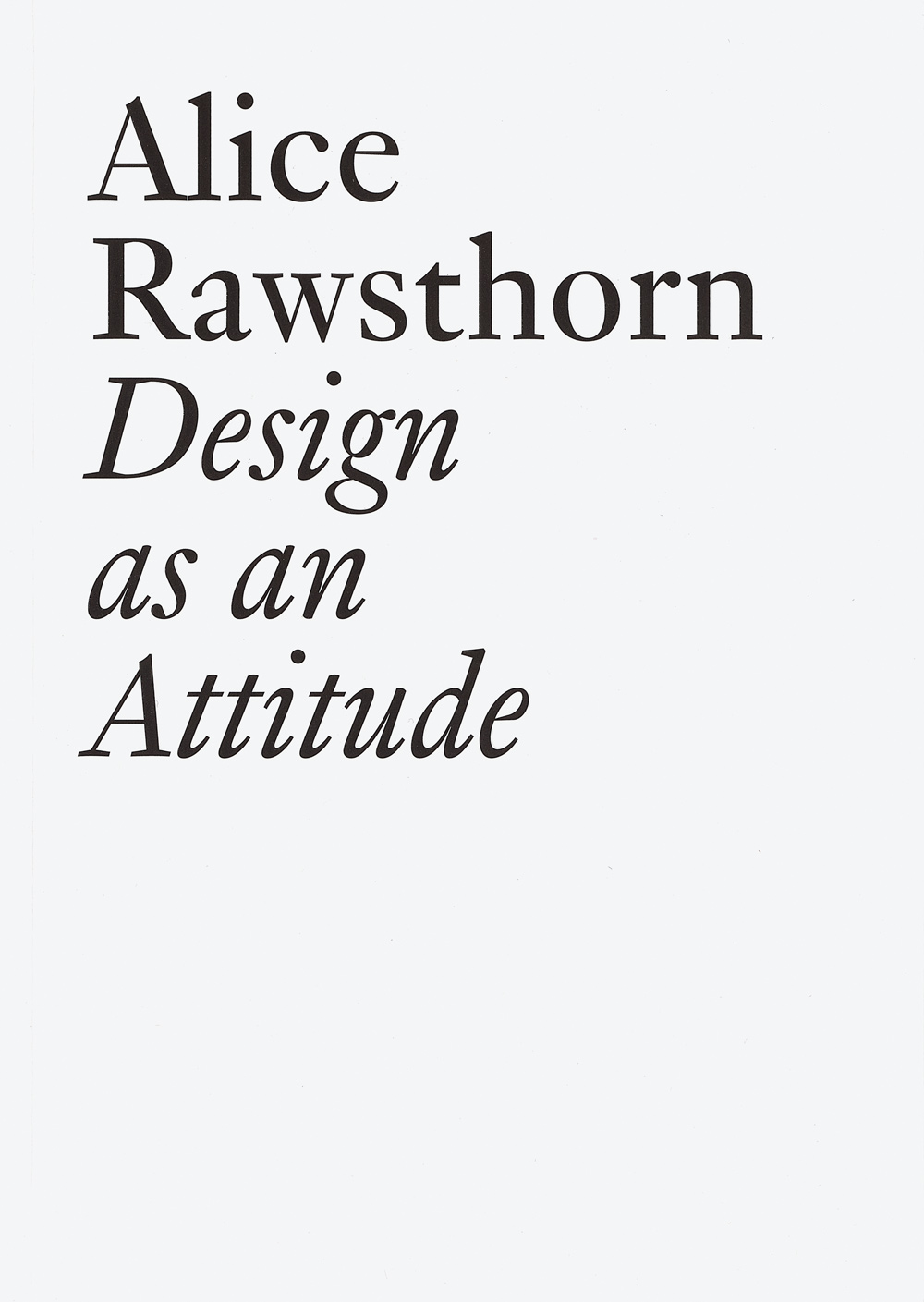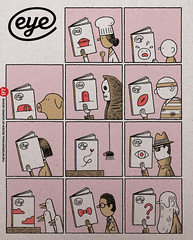Autumn 2018
Attitudinal angle
Design as an Attitude
By Alice Rawsthorn<br> Designed by Nicolas Leuba and Nicolas Eigenheer (concept by Gavillet & Cie)<br> JRP Ringier, £16, $29.95, €20<br>

We live in an ‘extraordinarily turbulent, often perilous time when we face changes of unprecedented speed and scale on many fronts’. While the majority of designers choose to look away, those who do not are the ‘attitudinalists’ – resourceful individuals with the strength of mind to confront directly the catastrophe that is life in the 21st century: climate change, the refugee crisis, failing governments, anti-social technologies, etc. So goes the argument supporting Alice Rawsthorn’s Design as an Attitude, a collection of essays – originally published in Frieze magazine between 2014 and 2017 – that address what the author believes are the ‘most important issues in contemporary design … when the discipline itself and its impact on our lives are changing dramatically’.
Rawsthorn is a distinguished author – formerly head of the Design Museum in London and later a New York Times design critic – and she showcases her extensive knowledge throughout this book. But the concept of ‘attitudinal design’ that has been retrofitted to the original texts haunts a new interpretation of them here. The book’s title is a homage to László Moholy-Nagy, who proclaimed that ‘designing is not a profession but an attitude’. However, the opening chapter, ‘What is Attitudinal Design?’, does not sufficiently explain what this term means, preferring to suggest through example. Just one paragraph attempts a specific definition (following on from a rather unfairly implicated Moholy-Nagy): ‘to interpret design as an “attitude of resourcefulness and inventiveness”, rather than a formal process … [with] the conviction that design should be applied to the major [social, political, environmental, economic] issues of the time …’. Lastly, ‘attitudinal designers should be bold enough to identify the causes they [wish] to embrace.’
Much of the chapter is taken up by a biography of Willem Sandberg, whose extraordinary career is said to epitomise the practice of attitudinal design, along with examples ranging from Florence Nightingale’s information graphics (see Eye 82) to the widely reported Ocean Cleanup project and the in-house design teams working at Nike; from software to service design. The examples are notable, but we should ask what such a vaguely defined categorisation adds to our understanding of them – the diversity of their disciplinary scope coupled with the brevity of the analysis makes comparative assessment difficult.
The following chapters reprint the Frieze articles in roughly their original form, but with new references to ‘attitudinal design’ inserted – for example, ‘altruistic designers’ in one earlier text becomes ‘attitudinal designers’ here. In chapters such as ‘The Fun of the Fair’ (on the Milan Furniture fair), this strategy undermines the purpose of the book. The original essay could have been rewritten to suit its new ‘attitudinal’ context, or omitted entirely.
Some chapters live up to the blurb’s urgency, notably the chapters on gender discrimination (‘Is Design Still a (Cis)Man’s World?’), institutional racism (‘Design’s Color Problem’) and disaster (‘When the Worst Comes to the Worst’).
Most present a discussion of contemporary design projects supported by relevant historical context. The examples are balanced between the canonical and the unfamiliar, and though the discussion tends too often toward hurried survey, when considered individually (and shorn of their ‘attitudinal’ associations), the essays provide a welcome primer for the interested reader. The Frieze articles were published in a magazine format with more illustrations than here. That range of visual support is missed, though the new closing notes mitigate this absence by providing further information about the designers and projects discussed.
Rawsthorn is full of enthusiasm for the ever-expanding field of design and she should be commended for bringing attention to a number of the important projects discussed. However, the grim realities of many of the situations she writes of – and of design’s relationship to them – demand a more critical perspective. A number of authors have begun to challenge the championing of design as the solution to complex social problems (Ruben Pater’s 2016 Dezeen article ‘Treating the refugee crisis as a design problem is problematic’ is one example), and we might question the implicit manner through which design has once again been cast here as saviour.
There is little acknowledgment of design’s role in the creation of many these of problems in the first place – environmental destruction being only the most glaring example. The Ocean Cleanup project is highlighted as a key representative of ‘attitudinal design’, but the environmental criticisms made of the project – many of which cite how it does not address the design-implicated root cause of plastic pollution – are frequently glossed over here in favour of celebrating the project’s entrepreneurial dynamism.
If design is an attitude, the history of the discipline shows that it is an attitude characterised as much by recklessness as resourcefulness. A more rigorous analysis of this systemic ambivalence would provide a stronger platform from which to plot directions forward.
Top: Cover of Design as an Attitude, no. 28 in the ‘Documents’ series published by JRP Ringier. Series design by Gavillet & Cie, Geneva.
John-Patrick Hartnett designer and lecturer, London
First published in Eye no. 97 vol. 25, 2018
Eye is the world’s most beautiful and collectable graphic design journal, published quarterly for professional designers, students and anyone interested in critical, informed writing about graphic design and visual culture. It is available from all good design bookshops and online at the Eye shop, where you can buy subscriptions and single issues. You can see what Eye 97 looks like at Eye Before You Buy on Vimeo.

